Are you a perennial gardener or homeowner with perennials in your landscape? Heading out on vacation for some rest and relaxation?
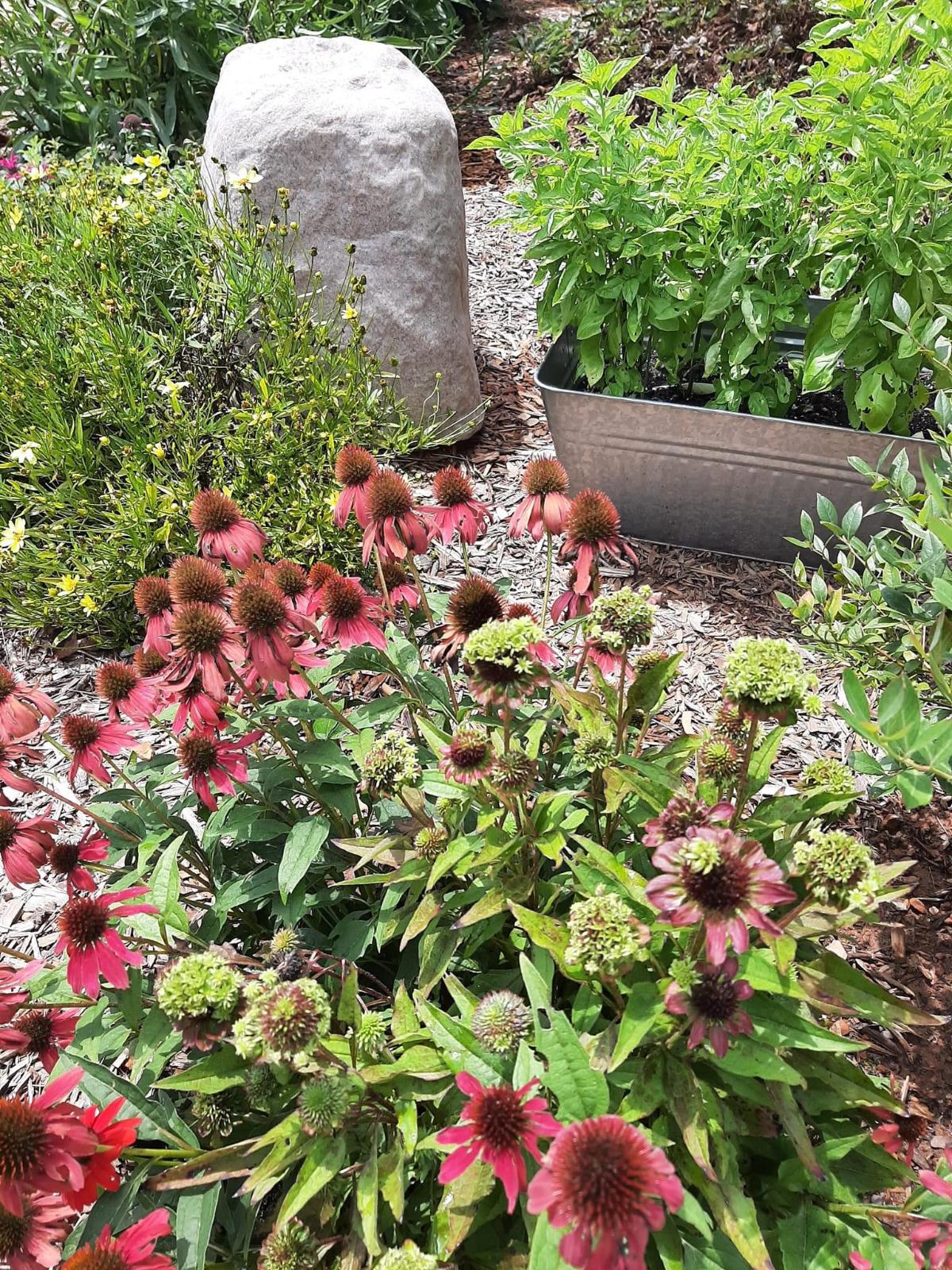
Good for you!
We’ve collected some of the top tips to make sure you come back to a lovely, thriving perennial garden and/or landscape.
Here’s how!
Jump to:
- 1. Water Well Before You Go
- 2. Fertilizer Isn’t a Bad Idea
- 3. Treat for Diseases or Insects
- 4. Mulch
- 5. Mulch Potted Perennials, Too
- 6. Do Deadheading and Trimming Before You Go
- 7. Move Potted Perennials to a Shady Space
- 8. Group Potted Perennials Together
- 9. Water Globes and Spikes Help Keep Plants Watered (Especially Potted Perennials)
- 10. Use Kiddie Pools for Watering Container Perennials
- 11. Lay Out Water Hoses and Irrigation
- What if Grouping, Moving, Et cetera Aren’t Options?
- When to Call in a Perennial Plant Sitter
1. Water Well Before You Go

Water your perennials before you go, close to the time of your departure.
Ideally, this would be either the evening before you leave or the morning of your departure. Whatever you can manage as close to the time you’re leaving as possible.
If you do this, your perennials that are planted in the ground will be set for a week or two. Perennials, fortunately, don’t need to be watered as much or as frequently as annual plants, which have shallower roots and less access to deeper moisture.
2. Fertilizer Isn’t a Bad Idea
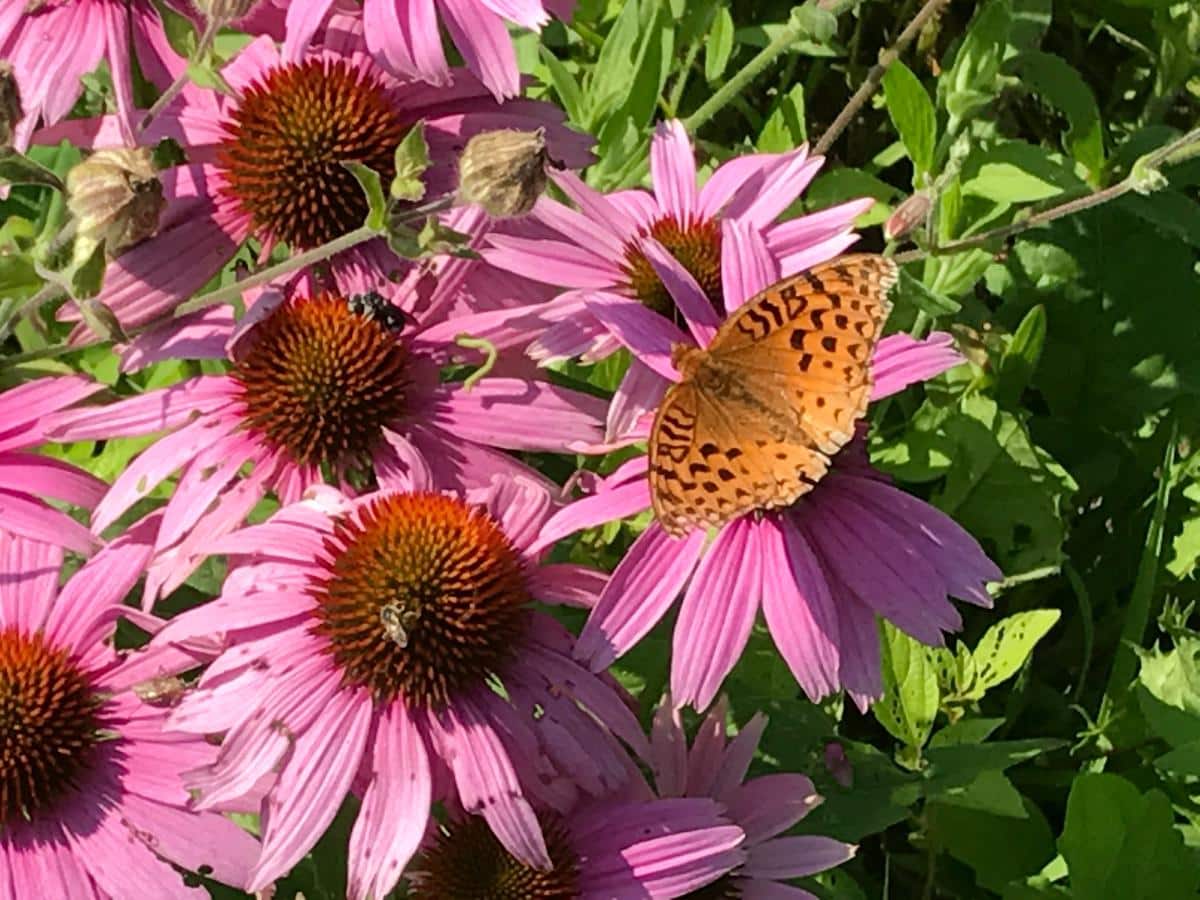
You don’t want to overfertilize, but if it’s been a while, you might think about a light top or side dressing of fertilizer before you go. This is more important if you’ll be gone for a longer period of time (two weeks or more).
Without you there to respond as quickly to weather, bugs, disease, and moisture (as in, lack of rainfall), Your perennials will be subject to a bit more stress than when you are home and keeping a closer eye on things. Well-fed, well-fertilized plants will be stronger and more able to handle stresses.
Besides that, gardening probably won’t be the first thing on your chore list when you get back. That, on top of a week or two (or more if you’re lucky) of vacation, could mean it will be three weeks or more before you get an opportunity to fertilize again.
So, if it’s a time when you would normally fertilize, it’s smart to lay that fertilizer out before you go.
If you choose to fertilize your perennials, apply the fertilizer before you water (or in the water) so it can be dissolved and worked into the soil where it can work.
3. Treat for Diseases or Insects
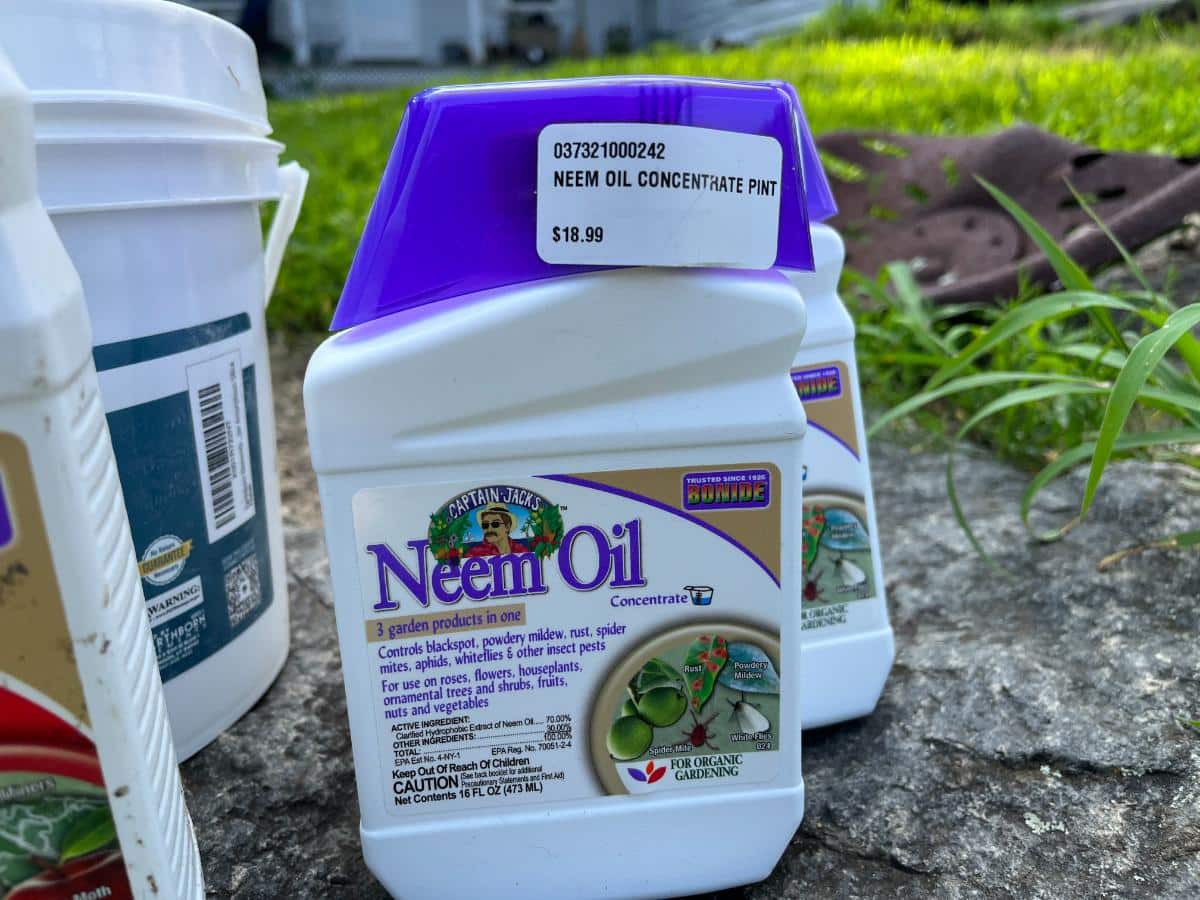
Seeing signs of mildew, fungus, blight, or another plant disease?
Noticing holes from munching insects?
Don’t make the mistake of thinking this will be okay to ignore until you come back. In another week or two, those fast-spreading summer pests and diseases will have wreaked havoc in your perennial garden. That’s enough time to destroy some plants.
Apply your treatment of choice before you leave. If you want some good, natural protection with both a level of prevention and treatment, spray a coating of neem oil on your valued perennial plants. It is both a natural insecticide and a natural antifungal agent.
Neem oil will give you about a week of protection or more, but its effectiveness will diminish after rains. (Read label precautions so you don’t inadvertently harm pollinators and beneficial insects when you spray the neem.)
4. Mulch
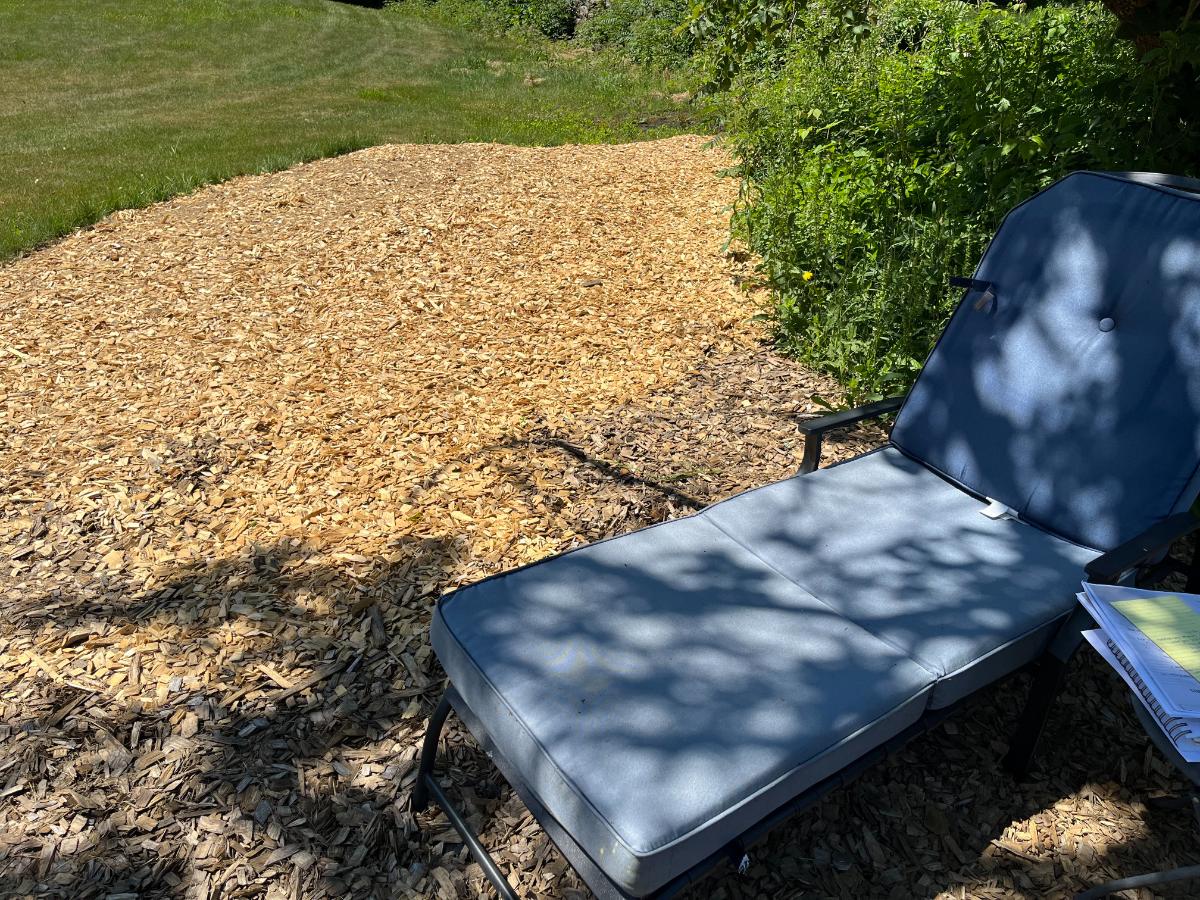
If your perennial garden doesn’t have a mulch layer, give it one.
This will keep weeds down while you’re gone, but more importantly, it will reduce moisture evaporation and keep more water in the soil for your plants.
That takes on added importance when you’re not around to deliver extra water as needed.
If your perennials are more widespread and not in a garden bed, you can just mulch around the root area of the shrub or plant. That will be roughly the area under the canopy spread (the “dripline” on a tree or shrub.)
5. Mulch Potted Perennials, Too
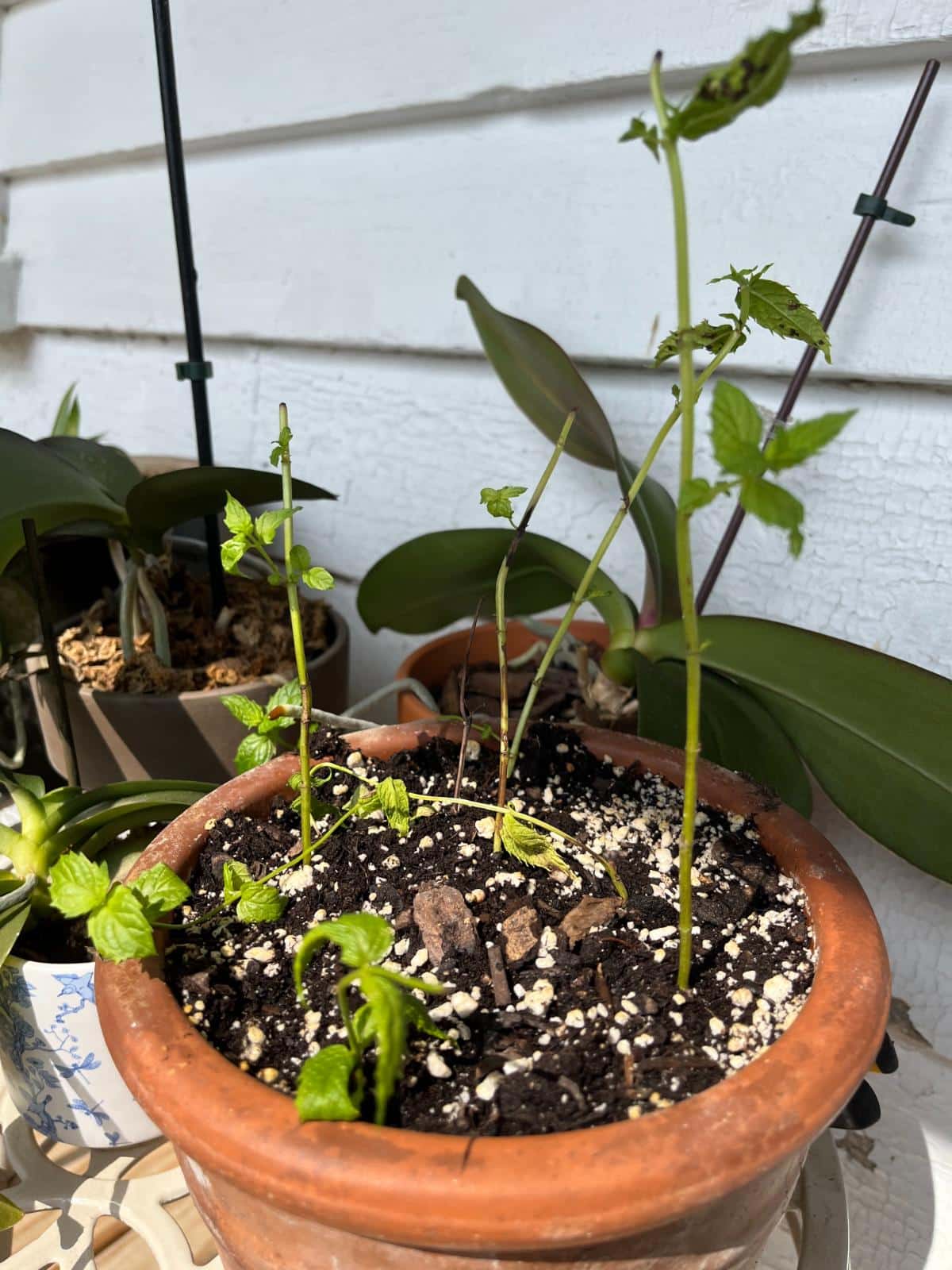
Potted perennials and container plants are more of an issue for vacationing gardeners than perennials planted in the ground. Do what you can to prepare them for your absence.
This is something we don’t often think about, but you can also mulch your container-planted perennials. Adding a layer of moisture-preserving mulch to the top of your perennial container plants can do a lot to stop evaporation and moisture loss.
It can slow the rate of loss down to where your potted perennials can go two or three days, possibly more, before watering.
You can find some good mulch materials right in your yard – pine needles and leaf litter work well.
Many container perennial gardeners like the look of moss over the top of their pots. It’s an excellent, absorbent material that holds moisture and helps to keep it in the soil.
Bark mulch or wood chips can be used to mulch container plants, too.
6. Do Deadheading and Trimming Before You Go
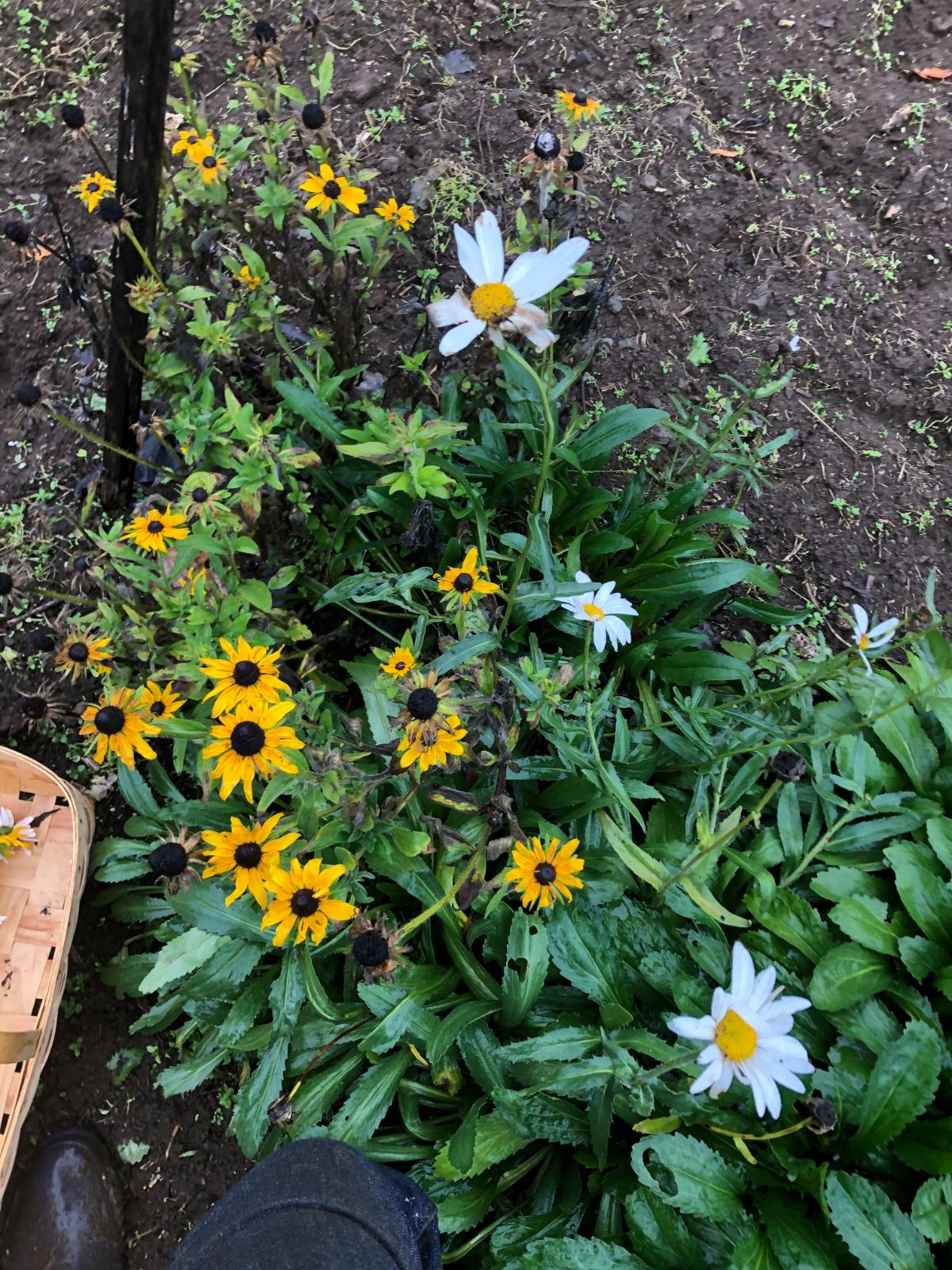
Pruning and trimming can wait for most perennials if there isn’t time before your vacation (except for those with limited pruning windows). If you can manage it, though, you’ll be glad to come back to nicely trimmed and shaped perennials.
Deadheading, however, should be done if the plants need it. If you wait too long to deadhead, you lose the benefits of it. If reblooming perennials go to seed, their blooming will stop.
Not to mention, deadheading stops plants from sending energy to spent blossoms and seeds and lets the plant redirect that energy to things like reblooming, growing, and root growth.
Your trimmed and deadheaded perennials will stay looking nice, be in good shape for your return, and won’t draw attention to the fact that there is no one around who is paying attention to what is usually a well-manicured yard or garden.
7. Move Potted Perennials to a Shady Space
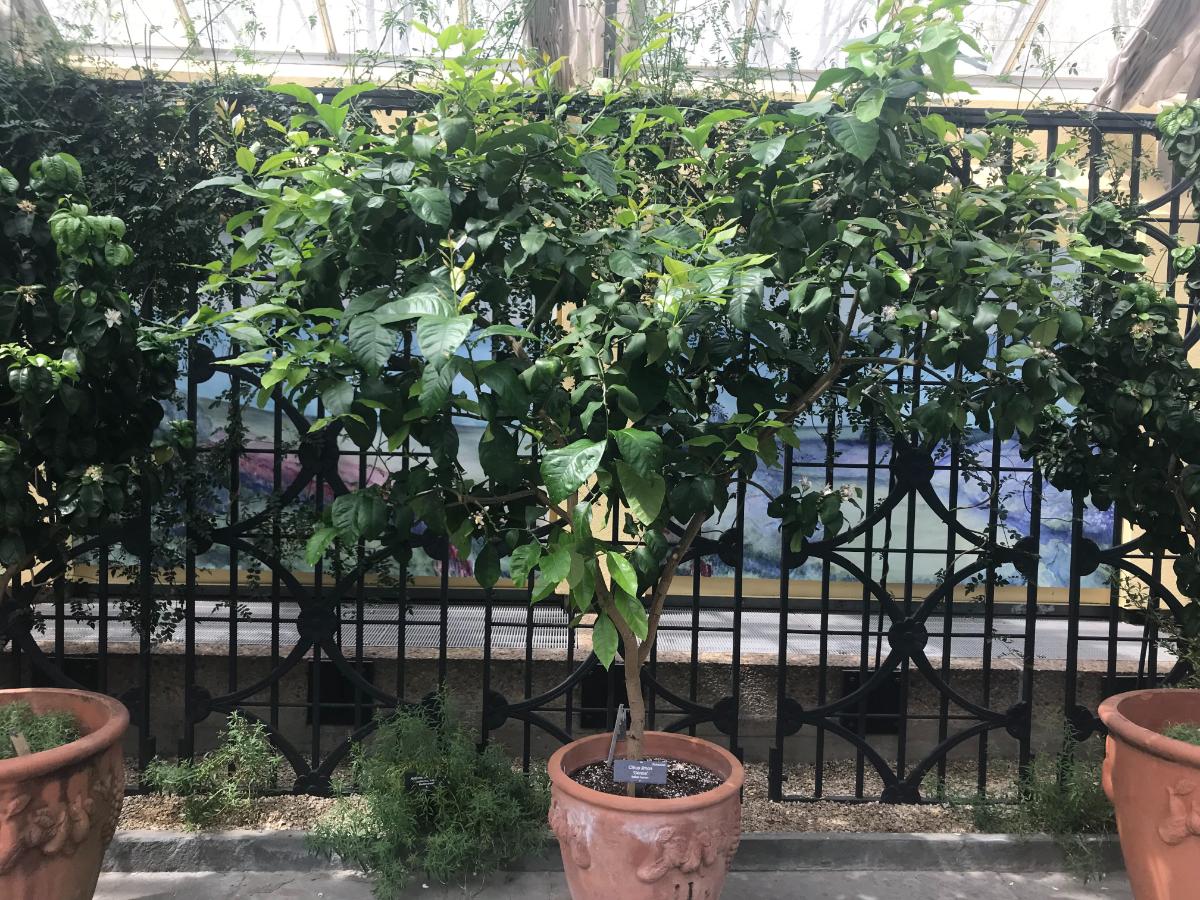
Again, container-planted perennials will be the hardest and need the most care. Truth be told if you take off for a week or two, most ground-planted perennials will survive it. Container plants will not.
To extend the time your perennial pots can go without care, move them to a shady space. They will endure far less stress and preserve much more water this way.
Even if your potted plants are full-sun perennials, they’ll be able to take the week or so in the shade. Moving them there will reduce water needs and reduce wilting.
8. Group Potted Perennials Together
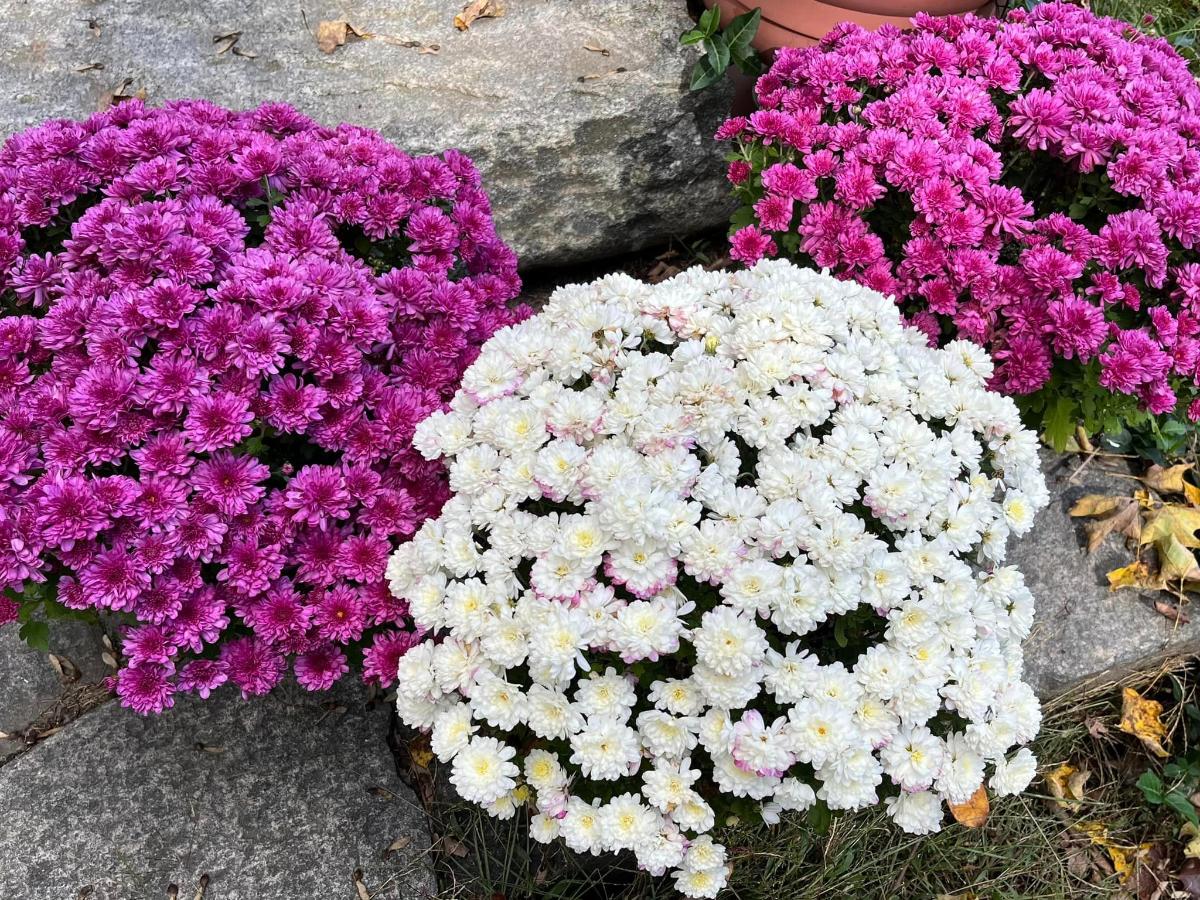
Move your potted plants into groupings, preferably in a reduced light/shade area where they won’t dry out so much from the sun.
This will help increase the humidity and reduce moisture loss through evaporation. However, it won’t be a replacement for good watering.
If you’re gone only for a few days and you water your potted perennials well before you go, grouped potted plants should be fine, but for more than three days you’ll need to do something more, especially if there isn’t any rain in the forecast.
Grouping container plants also makes it a lot faster and easier for plant sitters or family or friends to water them for you, since they’ll all be together in one (or two) space(s).
Bonus points if you can group the plants together near a water source!
9. Water Globes and Spikes Help Keep Plants Watered (Especially Potted Perennials)
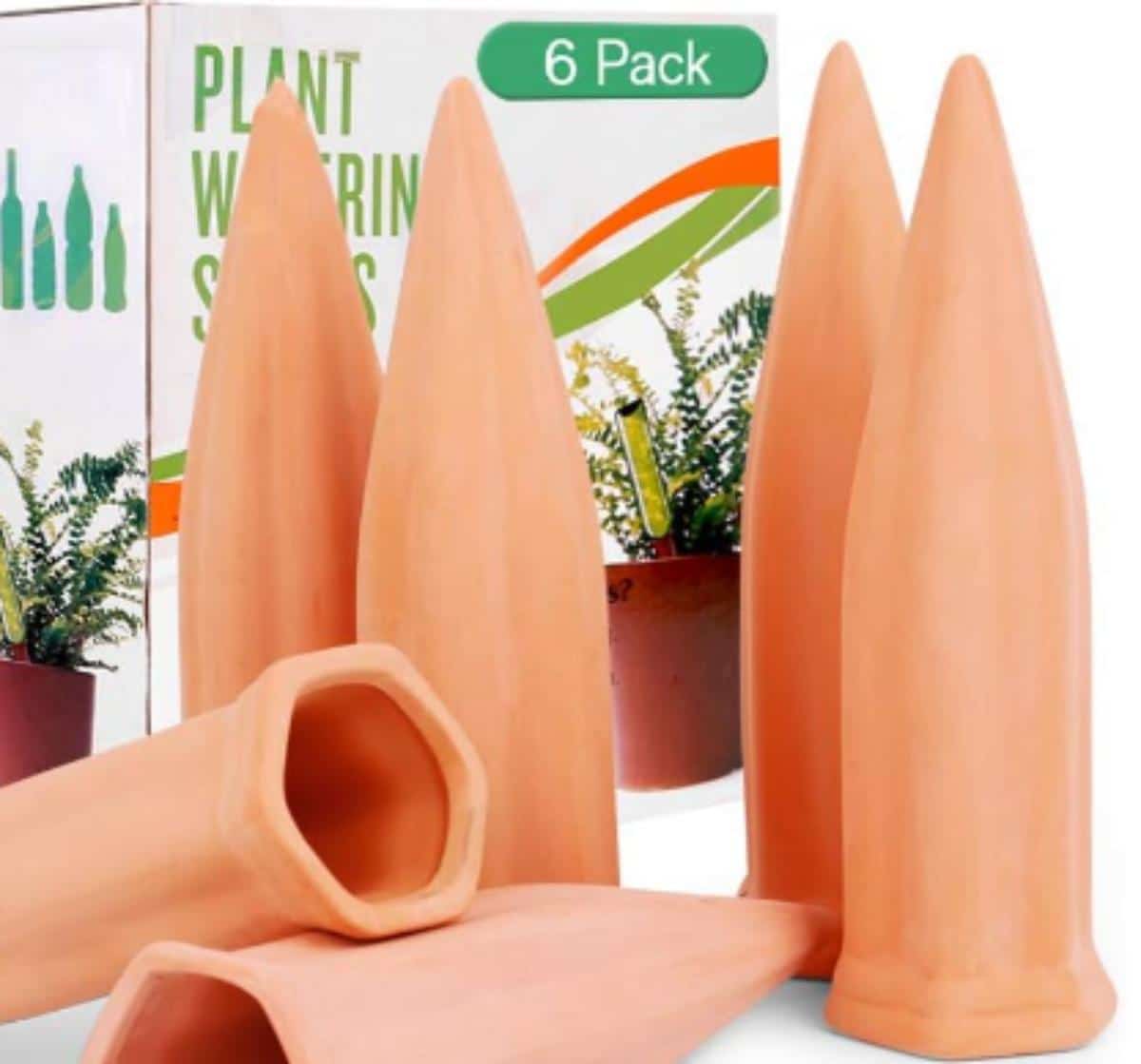
Unless you live in an arid climate (and even then, the perennials in the ground can probably handle a week without being watered), and unless you are having an especially dry (drought) year, your ground-planted perennials can handle a week or so without watering – probably at least two.
If you’ll be gone longer or of you have newly planted perennials in the ground, you might consider a water spike device to provide them slow water. They’ll need more regular watering.
Container plants will definitely need a water source before a week is up if you’re not getting regular rain (say every three days).
In these situations, water globes and plant spikes work well. These are a cheap, easy solution. Just use up-cycled water bottles or wine bottles in the spikes. They will slowly release the water into your pot.
One spike will keep the average pot moist for a week (up to about a 1-gallon pot). For larger pots, use more than one spike and bottle.
Spikes work best in moist soil, so again, make sure you water before you go to extend the time and effectiveness of the plant spikes.
10. Use Kiddie Pools for Watering Container Perennials
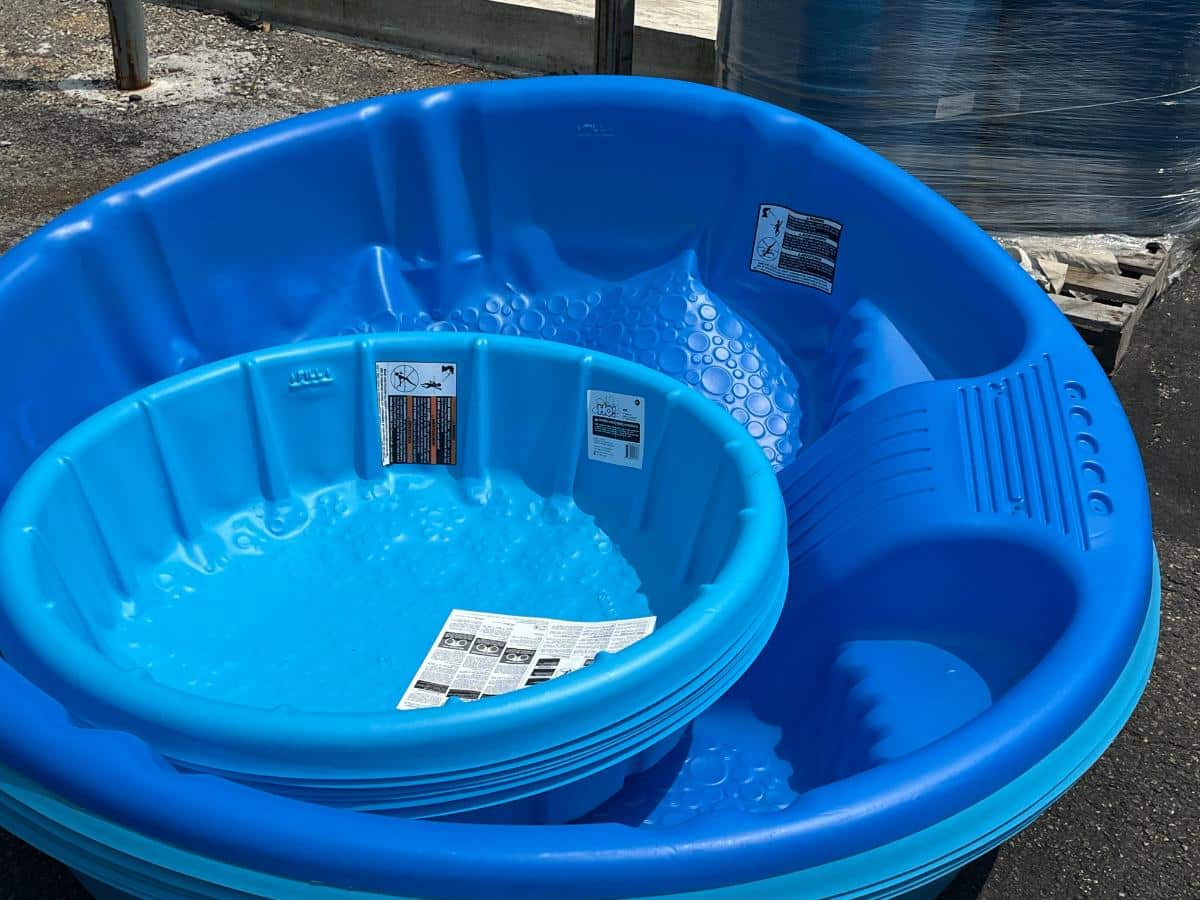
Here’s another good option for container perennials that can be moved and that have drainage holes in the bottom.
The holes need to be such that the soil inside can wick up water through them (in other words, the soil needs to be at the bottom of the pot or close to it and in contact with the water line, not with rocks or drainage materials in the bottom).
- Get a kiddie swimming pool large enough to fit all your potted perennials.
- Put about two inches of water in the bottom of the pool
- Set container plants in the pool of water
- Make sure you water the pots thoroughly when you set them in the pool so they start moist and primed
- The pool and water will act as a self-watering pot for the week or so while you’re gone
- A benefit of this system is that rainwater can help replace the water, too
It’s best to put the pool in the shade or part shade to reduce evaporation and so the plants drink less water. That will make this DIY vacation watering system last longer.
11. Lay Out Water Hoses and Irrigation

If you do plan to have someone come in and water for you while you’re gone, it’s wise to lay out your hoses and sprinklers before you go. Soaker hoses are best, so the water is targeted to where it’s needed, but whatever you are using, you know what needs watering the most and what layout works best.
By laying everything out ahead of time, you make it easy for a plant sitter to come and just turn on the water and know it will go where it needs to go.
What if Grouping, Moving, Et cetera Aren’t Options?
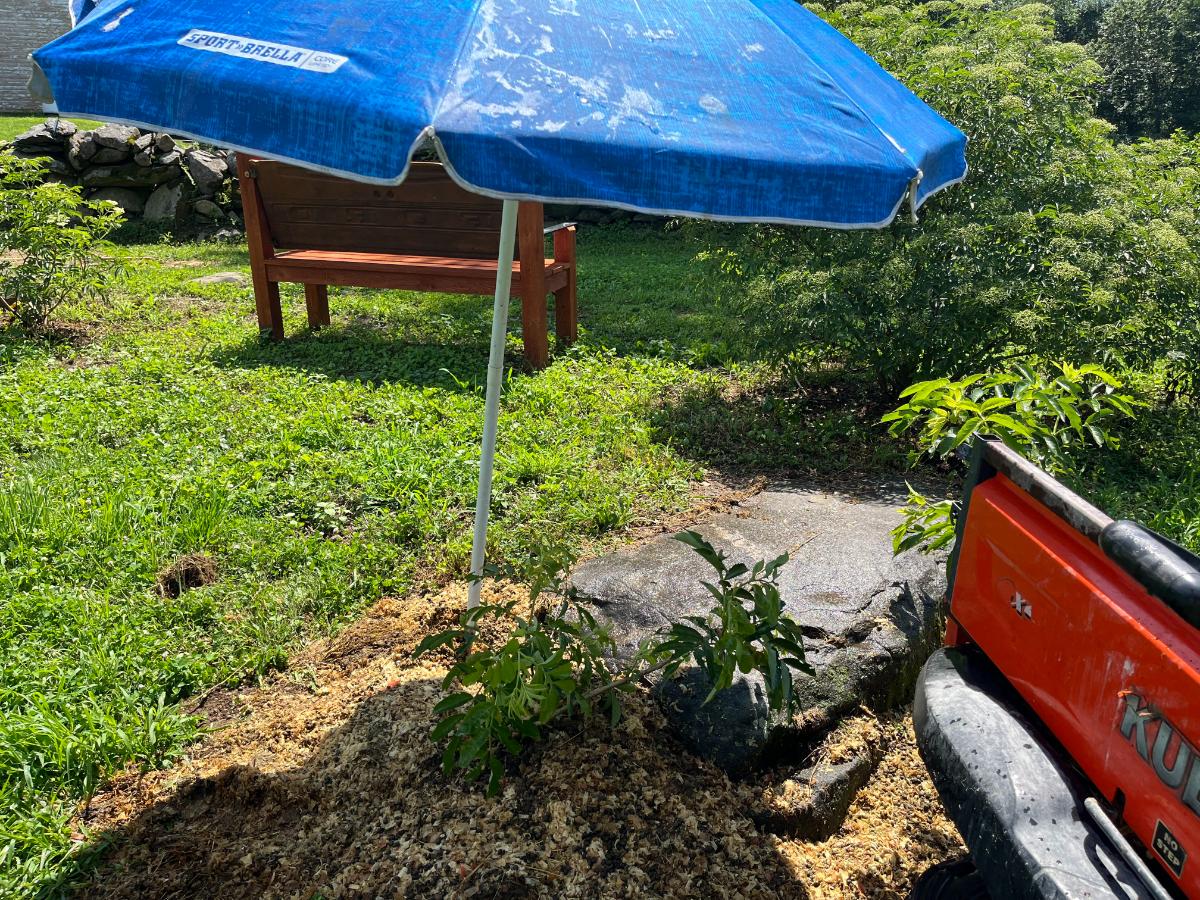
If you’re not able to move containers for grouping, watering, and shade, they will just need some extra consideration.
This is when you should install self-watering features (like plant spikes). You can also create shade by setting up a shade cloth, tarp, beach umbrella, or pop-up tent. And you may need to call in a backup sooner.
When to Call in a Perennial Plant Sitter
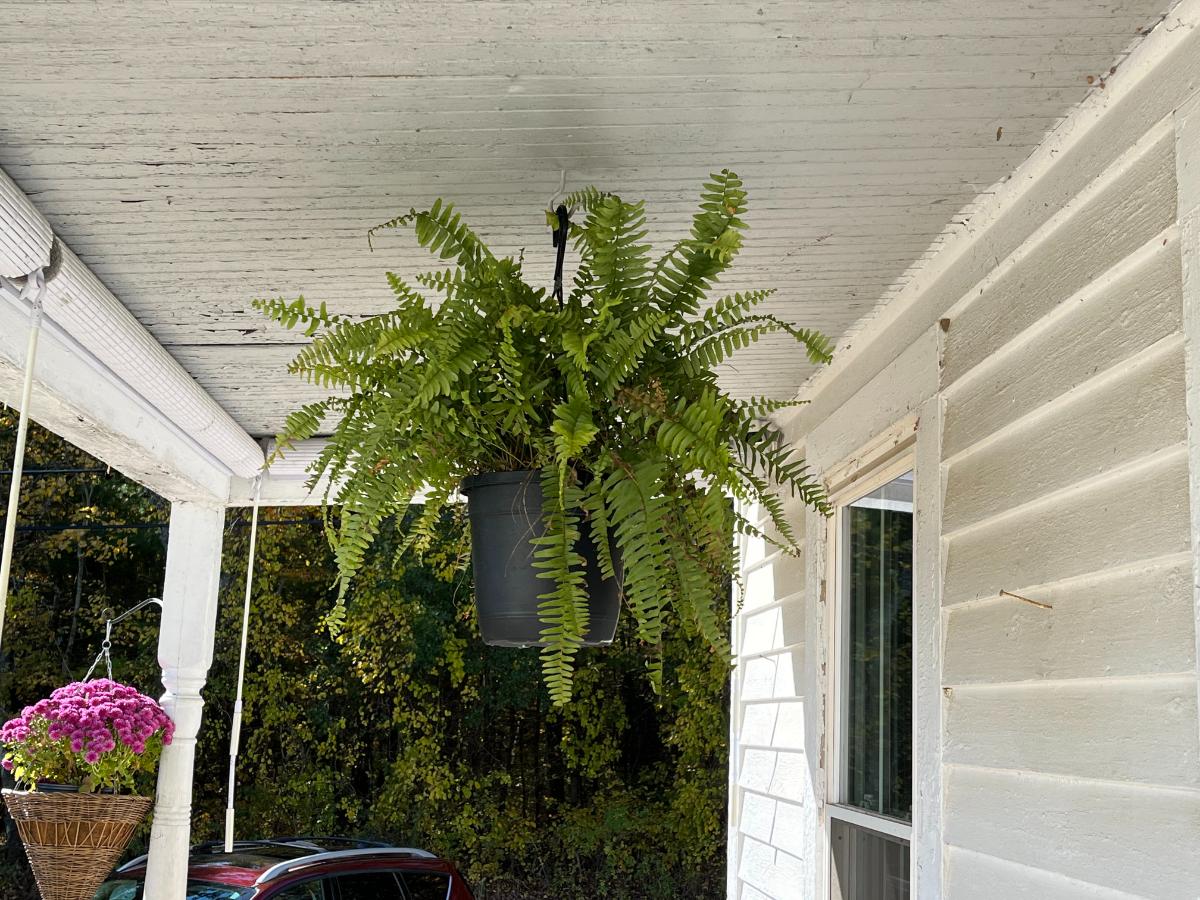
If you plan to be gone for more than a few days to a week and you have container perennials to protect, ask a friend to come over and give your pots some water or hire a plant sitter.
Tell the sitter when the potted plants need watering. If someone is coming in to water, they should water the pots every two to three days, depending on rainfall.
Landscape plants and most established perennials will easily go a week without extra watering, even up to two weeks.
If you get even minimal rainfall during this time, bedded and ground plants should be fine.
If you’re going to be gone for two weeks or more, and there is little or no rainfall, you should also have someone come in for your larger plants.
Shaded plants may survive two weeks without additional water, but full-sun plants will begin to wilt and struggle.
Perennials, in general, need about one inch of water per week. Most shrubs and ground perennials should survive for two weeks if they started your vacation well-watered (see number one above).
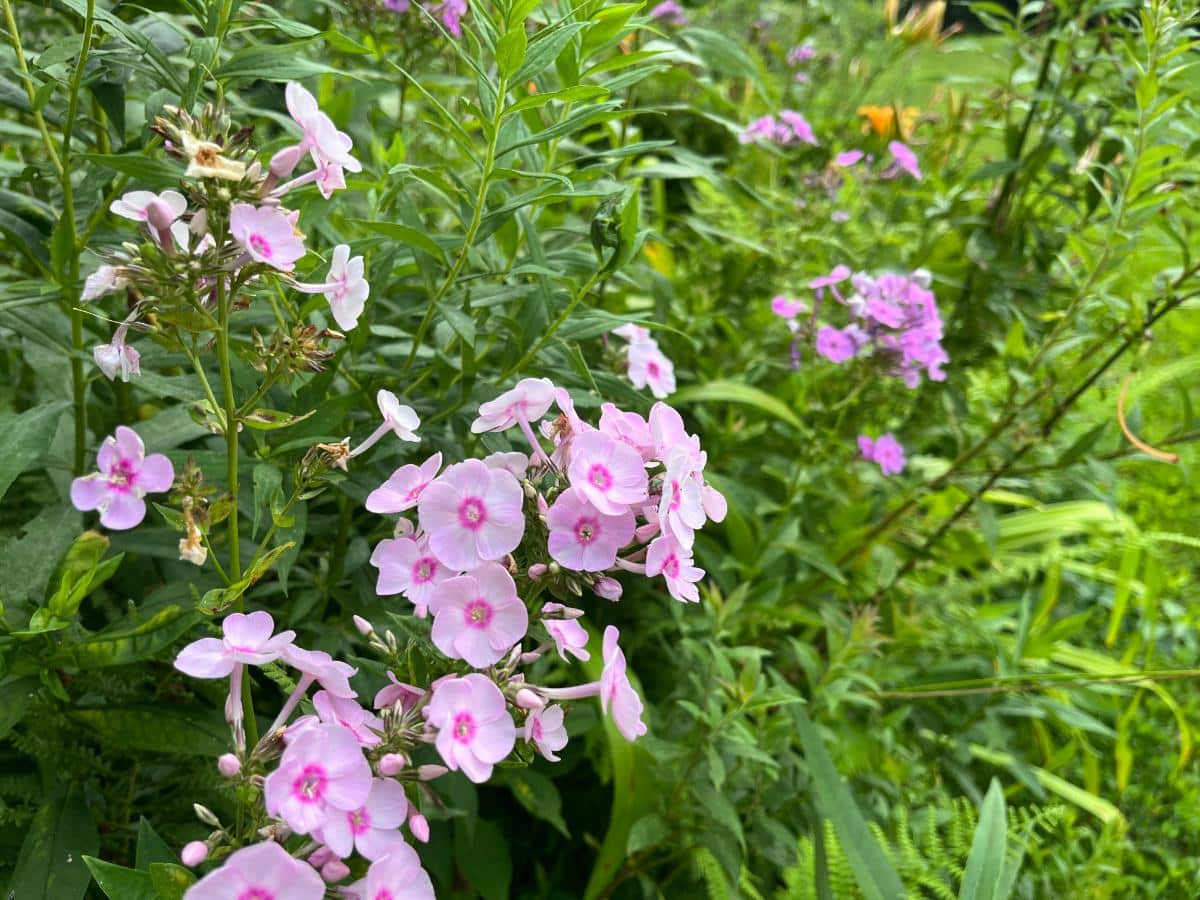
If it doesn’t rain when you are gone, after the first one to two weeks have the sitter water your in-ground beds.
With a bit of prep and some reasonable care, your perennials will do well until you return from your vacation. Then, you can come home to enjoy your perennial gardens once again.
Planning a trip? You might also want to check out:

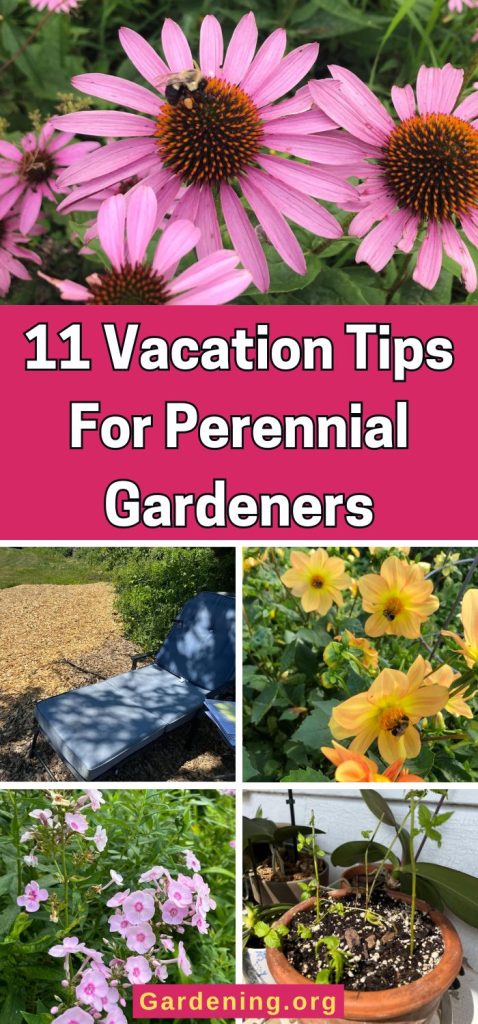

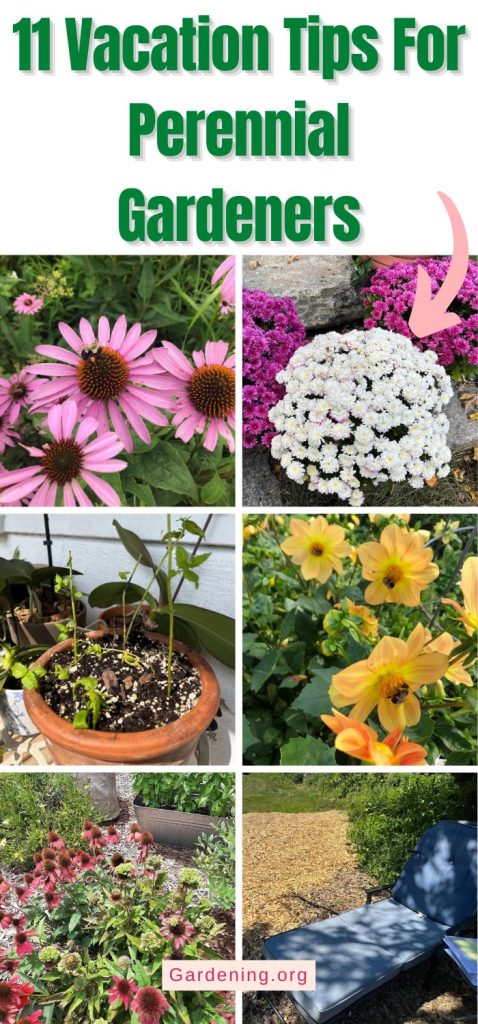

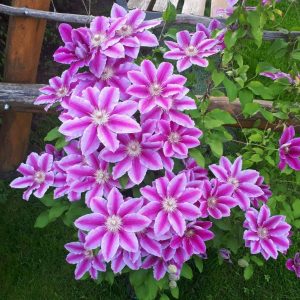
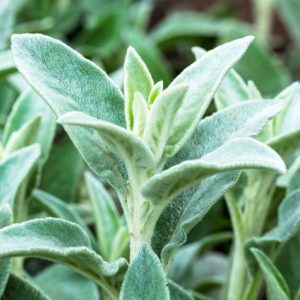
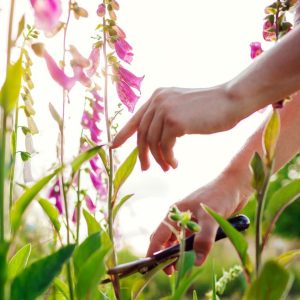
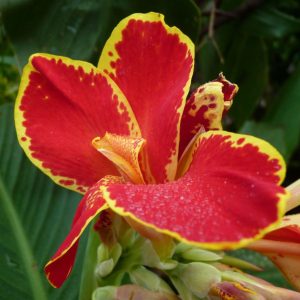
Mary Coakley
Your email on compost was.so good.I no longer am confused.I enjoy getting your.emails its.a learninh curve